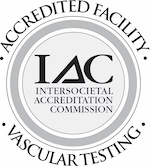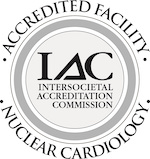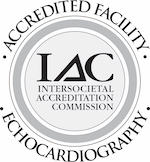Obesity, Irregular Heartbeat and Stroke Risk
As we learn more about excess weight and its consequences, it has become clear how far-reaching its effects truly are. We have known for years that excess weight can lead to cardiac issues as a result of high blood pressure and high cholesterol. More recent studies have identified that some of the factors underlying cardiac arrhythmias, including atrial fibrillation, are directly linked to excess weight and obesity. A 2015 study1 in the Canadian Journal of Cardiology shows that obesity has direct follow-on ramifications including increased risk of sudden cardiac death (SCD) and atrial fibrillation.
The American College of Cardiology estimates that the prevalence of atrial fibrillation in US adults will triple by 2047 to over twelve million people. This follows the obesity epidemic that the United States has been experiencing for the past couple decades. The same study2 in the Journal of the American College of Cardiology shows that obesity increases the size of the left atrium, thus increasing the risk of irregular electrical activity in the heart.
How does this correlate to stroke risk?
Atrial fibrillation has a direct correlation to the risk of stroke. In fact, patients with untreated atrial fibrillation are at a five times higher risk. The mechanism behind this risk is the Left Atrial Appendage (LAA) – an outpouching from the heart. The role of the LAA is unclear – very similar to our appendix in the sense that it is not useful to our anatomical function, but can cause significant problems.
Cardiac arrhythmia, and especially atrial fibrillation, increases the chance of blood pooling in the LAA. Any time blood pools, especially in the heart, there is a significant chance that a blood clot breaks off and travels to the brain, causing a stroke.
Management of obesity-related arrhythmias
Advances in minimally invasive catheter technology have allowed us to offer highly effective and very safe procedures to address cardiac arrhythmias. However, our goal is to start with the most conservative treatment options and only move to more invasive options as necessary.
Step 1:
If we believe that the arrhythmia is caused by underlying obesity issues, we will recommend lifestyle changes in the form of diet exercise, to reduce cardiovascular risk. Many patients who dedicate themselves to a healthier lifestyle will see improvement in their medical conditions.
Step 2:
In patients who have a high risk of stroke or patients who have not been able to modify their lifestyle through diet and exercise, medication in the form of blood thinners may be the most appropriate course of action. Blood thinners are effective in most patients, while up to 30% will not tolerate medication well or will not see significant improvement in symptoms. More importantly, however, medication is not a curative option, so the underlying disorder is not addressed.
Step 3:
Qualifying patients may be suitable for a cardiac catheter ablation which involves the elimination of malfunctioning heart tissue to restore regular heart rhythm. Catheter ablation is minimally invasive and very effective. It is a curative procedure, meaning that it treats the underlying disorder. While most patients see significant improvement or resolution of symptoms, some may require follow-on ablations or a low dosage of adjunctive blood thinners.
Step 4:
Patients with a very high risk of stroke may benefit from closure of the left atrial appendage to seal off any blood clots and offer a preventative measure against stroke. Known as Watchman Left Atrial Appendage Closure, a minimally invasive device is placed at the entrance of the LAA using a catheter, with minimal downtime and excellent results.
As you can see, obesity can have serious consequences one of which is cardiac arrhythmia and the subsequent increase in stroke risk. Speaking to a qualified electrophysiologist, such as the ones of the Huntington Heart Center, is the first step to understand your options and begin an effective treatment regimen.
1The Implications of Obesity for Cardiac Arrhythmia Mechanisms and Management. Pathak R.K., Mahajan R., Lau D.H., Sanders P. (2015) Canadian Journal of Cardiology, 31 (2) , pp. 203-210.
2Obesity and Atrial Fibrillation Prevalence, Pathogenesis, and Prognosis. Carl J. Lavie, Ambarish Pandey, Dennis H. Lau, Martin A. Alpert, Prashanthan Sanders Journal of the American College of Cardiology Oct 2017, 70 (16) 2022-2035; DOI: 10.1016/j.jacc.2017.09.002







